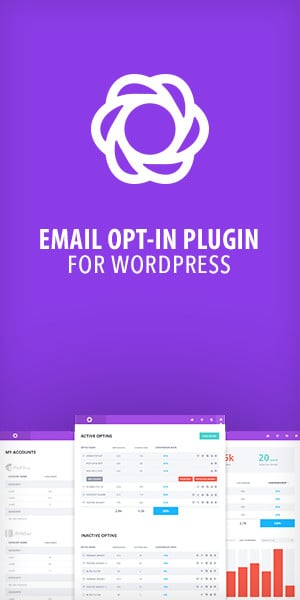Measuring the ROI of your customer loyalty program is essential to determine its effectiveness and ensure it drives business growth. By tracking key metrics such as customer retention, repeat purchase rates, and customer lifetime value (CLV), businesses can assess how much value their loyalty program generates. Analyzing these metrics helps refine the program and maximize returns.
Get to Know Customer Loyalty Programs
Customer loyalty is key to any thriving business. It builds those long-term bonds with your customers that keep the lights on and the tills ringing. Understand why customer loyalty matters and nail the basics of loyalty programs to boost customer retention and grow your business.
Why Customer Loyalty Counts
It’s more than just closing a sale. It’s about growing genuine relationships, earning trust, and turning customers into fans who pick you over the other guys. Loyal customers don’t just come back— they spread the love by telling their friends and helping your rep.
By putting customer loyalty first, you’re looking at higher lifetime value, better retention, and staying ahead of the competition. Keeping your customers happy and engaged means steady growth and bigger profits down the road.
Loyalty Programs 101
Loyalty programs are all about rewarding your customers for sticking with you. This could be through points, membership tiers, special discounts, or personalized offers. Basically, it’s like giving your regulars a big hug and saying, “Thanks for coming back!”
The main goals of these programs? Strengthen those customer bonds, keep them engaged, and turn them into loyal followers. By giving them rewards they actually care about, you’re making them happy and driving success for your business.
Thinking about if your loyalty program is paying off? It comes down to looking at return on investment (ROI). Weigh the costs against the gains and you’ll see if you’re on track. For a detailed look at calculating ROI for your loyalty program, check out our article on roi of loyalty programs.
Remember, building customer loyalty is an ongoing gig. It needs constant care, fresh ideas, and always keeping your customers in focus. Kick things off with a solid loyalty program and you’ll build a loyal customer base that fuels your business for the long haul.
Setting Up Your Loyalty Program Goals
So, you’re thinking about kicking off a loyalty program? Smart move! Let’s break down how to set those objectives to make sure you’re not wasting your efforts—or your cash. We’ll walk you through the steps for defining your goals and setting up the metrics you’ll use to see if your loyalty program’s actually working.
Nailing Down Your Goals
First off, you gotta know what you’re aiming for. Simple as that. What do you want to achieve with this loyalty program? Maybe it’s more repeat customers, higher sales, or turning your customers into raving fans. Whatever it is, make it clear and specific.
Here’s some stuff to think about:
- Keeping ‘Em Around: How about upping your customer retention? Decide on a target percentage increase for a specific timeframe.
- Getting Bang for Your Buck: Look at boosting how much each customer spends over their lifetime with your brand. Aim for repeat buys and higher average order values.
- Spread the Word: You want your customers to shout from the rooftops about your awesome brand. Focus on turning them into brand ambassadors.
- Making Bank: Your bottom line matters. Use customer loyalty to keep sales pumping and growing steadily.
Defining these goals gives you a clear path and something to measure your success against. The key here is to make your goals as specific as possible. That way, you’ll know exactly what you’re aiming for and when you’ve hit the mark.
Figuring Out Your KPIs
Alright, you’ve got your goals. Now you need to set up those key performance indicators (KPIs)—fancy term, but really just metrics you’ll use to measure how well you’re doing.
Here are some KPIs that can help you gauge your program:
- Sticking Around: Keep an eye on your customer retention rate. This metric shows the percentage of customers who keep coming back.
- Customer Lifetime Value (CLV): Check out the total revenue a customer is expected to bring in while buying from you. This indicates long-term profitability.
- Buying Again and Again: Track how often your customers come back to make another purchase. This tells you about their loyalty and satisfaction.
- Net Promoter Score (NPS): Fancy name, simple idea. Ask customers how likely they are to recommend your brand to others. This gives insight into their satisfaction and loyalty.
Keep tabs on these KPIs regularly. If they’re not hitting where you want, tweak your strategies and keep improving. Trust me, continuous check-ins and adjustments based on these KPIs are gold if you want to keep your customers loyal and happy.
So, go ahead and set those goals, pick your KPIs, and watch your loyalty program take off. Here’s to happier customers and a healthier bottom line!
Figuring Out ROI for Your Loyalty Program
Checking how well your customer loyalty program’s doing? You gotta nail down that return on investment (ROI). To get a real sense of what’s working, let’s break down the costs and tally up the earnings from your loyalty magic.
Pinpointing Costs
First off, tally up everything you’re shelling out for the loyalty program. Here’s what you need to look at:
| Cost Category | What It Means |
|---|---|
| Program Development | Costs for setting up the program – think software, marketing materials, and staff training. |
| Rewards and Incentives | What you spend on those juicy rewards, discounts, and perks to keep customers coming back. |
| Operational Costs | Day-to-day expenses like customer support and program maintenance. |
| Promotional Activities | Money spent on marketing blitzes and spreading the program hype. |
Track all these pennies and nickels obsessively. Knowing what you’re spending is step one to getting the whole ROI picture.
Counting Your Cash
After you’ve tracked your expenses down to the last cent, time to see how much more money your loyalty program is pulling in. Check these essential revenue signs:
| Revenue Metric | What It Means |
|---|---|
| Incremental Sales | Extra cash from loyal customers making repeat buys, adding more to their cart, or trying new stuff. |
| Customer Lifetime Value (CLV) | Total dollar value a customer brings over their entire relationship with you, considering how often and how much they buy. |
| Referral Sales | Earnings from customers spreading the word and getting their friends to buy. |
| Customer Retention | The benefit of keeping existing customers around—they’re more likely to buy again and again. |
Add up these revenue streams to see the program’s impact. Cross-checking these against your costs gives you the true ROI. For a deeper dive into customer value, check out our piece on customer lifetime value.
Why ROI Matters
Knowing your loyalty program’s ROI helps you tweak your strategies, making sure your efforts sync with your business goals. Dive into the financial effects of your loyalty tricks, buff up customer happiness, boost your bottom line, and keep those customers sticking around for the long haul.
So, keep an eye on those costs and earnings, adjust where needed, and see your loyalty program pay off big-time.
Metrics to Measure Loyalty Program Success
Trying to nail down how well your loyalty program is working? You need to keep an eye on the right numbers. Tracking the right metrics will give you a clear picture of what’s working, and what’s not, and help you tweak your program for maximum impact. Here are four must-watch metrics to keep your loyalty program on point:
Customer Retention Rate
So, how many customers stick with you over time? That’s what the Customer Retention Rate tells you. A high retention rate means your loyalty program is doing its job keeping customers around. Here’s a simple way to figure it out:
[ text{Customer Retention Rate} = frac{(text{Number of Customers at End of Period} – text{Number of New Customers})}{text{Number of Customers at Start of Period}} times 100 ]
Customer Lifetime Value
Customer Lifetime Value (CLV) is all about knowing how much money a customer will likely spend with you over time. It’s useful for spotting your big spenders and giving them the VIP treatment. Here’s the magic formula:
[ text{CLV} = text{Average Purchase Value} times text{Purchase Frequency} times text{Customer Lifespan} ]
Repeat Purchase Rate
Want to know how many customers are coming back for more? The Repeat Purchase Rate tells you exactly that. The higher this rate, the more hooked your customers are on your stuff. You can figure it out with this:
[ text{Repeat Purchase Rate} = left( frac{text{Number of Repeat Customers}}{text{Total Number of Customers}} right) times 100 ]
Net Promoter Score (NPS)
Net Promoter Score (NPS) gauges customer loyalty and how likely folks are to recommend your brand to others. You break down customers into Promoters, Passives, and Detractors based on their answers. It’s like taking a loyalty pulse check.
| Promoters (>8) | Passives (7-8) | Detractors (<7) |
|---|---|---|
| Fans who rave about you. | Customers who are fine but not excited. | Not happy campers who can bad-mouth your brand. |
Watching these metrics closely lets you see how your loyalty program is doing. Surveys, social media checks, and customer reviews are gold mines for feedback. They help you make tweaks that keep your loyalty program fresh and engaging, driving better results.
Getting the Most Out of Customer Feedback
Listening to your customers isn’t just a nod to good manners—it’s how you keep your loyalty program in tip-top shape. Here’s how to sift through what your customers are saying, improve where you need to, and make savvy decisions. Let’s dig into the most useful methods of tapping into customer insight for your loyalty program.
Surveys and Feedback Forms
Surveys and feedback forms are structured ways to grab useful info from your customers. Planning aimed-and-precised surveys lets you gather both numbers and stories about how your program is doing and what could be better.
| Survey/Form Type | What It Does |
|---|---|
| Net Promoter Score (NPS) Surveys | Gauges customer loyalty and overall happiness |
| Customer Satisfaction Surveys | Judges general satisfaction with your program |
| Feedback Forms | Collects specific thoughts on what your program offers |
Putting out surveys and feedback sheets at different points—from the moment they sign up to after a big purchase—helps tracks how feelings change and what needs tweaking.
Social Media Monitoring
Keeping an eye on social media for what folks are saying about your loyalty program is like having a direct line to their thoughts—unfiltered and in real-time. Jumping into conversations, addressing gripes, and high-fiving customers for good vibes can build a sense of belonging and loyalty.
Use snazzy listening tools to spot brand mentions, sense-check moods, and catch industry trends. This nosy approach helps you fix hiccups sharpish, celebrate good moments, and bond with customers.
Customer Reviews and Testimonials
Customer reviews and testimonials dish out unvarnished views of their experience with your loyalty program. Whether it’s on review sites, social networks, or your own site, these reviews serve up honesty and build trust with new customers while giving you golden nuggets of feedback.
| Where | What For |
|---|---|
| Yelp, Google Reviews | Shows how happy customers are and service levels |
| Website Testimonials | Showcases happy stories directly about your program |
| Social Media Comments | Engage with thoughts and respond quickly to feedback |
Keeping tabs on and responding to reviews shows your customers you care and you’re always looking to up your game. Highlight good reviews to attract new folks and deal with negative ones smartly to boost your program’s image.
By taking in customer feedback through surveys, social media, and reviews, you’ll get a full picture of how people feel about your loyalty program. With these insights, you can keep improving and ensure your program stays relevant, making your customers want to stick around.
Making the Most of Data Analytics
To see if your customer loyalty program is hitting the mark, using data analytics is key. With customer relationship management (CRM) systems and data tools in your arsenal, you can dig into the effectiveness of loyalty programs and tweak them for better results.
Taking Advantage of CRM Systems
A CRM system is your go-to for improving customer relationships and keeping tabs on loyalty interactions. It’s like having a big, organized file cabinet for all your customer info, from purchase history to their favorite products. With this data, you can shape your loyalty program around what your customers actually like and want.
CRMs let you group your customers into segments, spotlight VIPs, and customize loyalty perks to keep them engaged. They also give you a thorough look at how customers interact with your business across different platforms, making it easier to deliver a smooth, personalized experience.
Data Tracking and Analysis Tools
Beyond CRMs, data tracking and analysis tools are vital for checking how well your loyalty program is doing. These tools let you keep an eye on key metrics, follow customer behavior, and gauge the effectiveness of your loyalty efforts.
By digging into the data—like how often customers come back, how frequently they buy, and how engaged they are—you can spot trends and patterns that show how your program is performing. These tools can also help you see the return on investment (ROI) by comparing program expenses with the revenue they generate.
To really get a handle on how your loyalty program affects customer retention and lifetime value, you might want to use advanced analytics techniques like predictive modeling and segmentation analysis. These methods dive deeper into customer behavior and preferences, helping you fine-tune your loyalty strategy for better long-term results.
Using CRM systems and data tools together lets you precisely measure your loyalty program’s performance and make informed decisions to boost customer happiness and loyalty. Keep an eye on the data you gather and use it to adjust your strategies, ensuring your loyalty program stays relevant and effective for your audience.
Smart Choices with Data
Boosting your customer loyalty program’s success is all about using the right info. By looking at ROI stats and tweaking your methods, you can make your program more effective and keep growing.
Making Sense of ROI
Getting a grip on the ROI of your loyalty program is a must for knowing how well it’s working. ROI metrics give you the lowdown on how good your program is at keeping customers and making money. Here’s a quick formula to figure out your program’s ROI:
[ text{ROI} = left( frac{text{Revenue Gained from Loyalty Program} – text{Total Cost of Loyalty Program}}{text{Total Cost of Loyalty Program}} right) times 100% ]
By checking out ROI metrics, you see the real value your loyalty program brings. Compare this data over time against industry standards to spot areas needing a boost and make smarter choices.
Tweaking for the Best Results
Once you’ve got your ROI insights, it’s time to change things up to get the most out of your loyalty program. Here’s how to nail it:
Make it Personal: Craft your loyalty program to cater specifically to your customers’ tastes and needs. Use data to offer personalized rewards and deals they’ll love.
Keep Talking: Stay in touch with your customers about loyalty perks. Use emails, social media, and app notifications to keep them in the loop.
Watch and Learn: Keep an eye on how your program is doing. Track metrics like customer retention, lifetime value, repeat buys, and Net Promoter Score (NPS). Look for trends and tweak your tactics as needed.
Motivate Engagement: Get your customers more involved by giving them cool rewards and exclusive perks. Adding game-like elements like points, badges, and tiers can also make them more interested.
By making data-based tweaks and focusing on ROI, you can build a strong base of loyal customers who keep coming back. For more tips on customer loyalty and program best practices, check out our articles on customer loyalty and loyalty programs.
Frequently Asked Questions
What metrics should I use to measure the ROI of a customer loyalty program?
Key metrics for measuring the ROI of a loyalty program include customer retention rate, repeat purchase rate, customer lifetime value (CLV), and overall revenue growth. Tracking these metrics helps you understand how much value the program is bringing to your business.
How does customer lifetime value (CLV) help measure loyalty program success?
Customer lifetime value (CLV) helps measure loyalty program success by showing the total revenue a customer is expected to generate over their relationship with your business. An increase in CLV after implementing a loyalty program indicates that customers are staying loyal and spending more.
How can businesses calculate the financial return of their loyalty program?
Businesses can calculate the financial return of their loyalty program by comparing the program’s costs (e.g., rewards, technology, marketing) to the revenue generated from increased customer retention, repeat purchases, and higher average order values. The difference between these figures provides the ROI.
How does customer retention rate affect loyalty program ROI?
The customer retention rate is a critical factor in loyalty program ROI, as higher retention rates mean customers are staying loyal and continuing to make purchases. By increasing retention, businesses lower the cost of acquiring new customers and increase the profitability of their existing customer base.
Can surveys and feedback help measure the ROI of a loyalty program?
Yes, customer surveys and feedback can help measure the ROI of a loyalty program by providing insights into customer satisfaction and program engagement. This qualitative data complements metrics like revenue and retention, giving a more complete picture of the program’s impact on customer loyalty.




